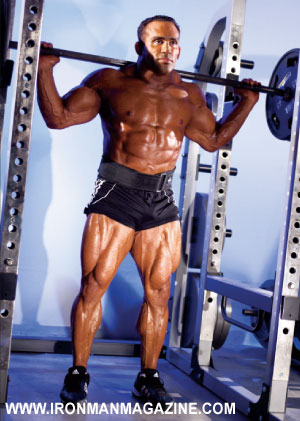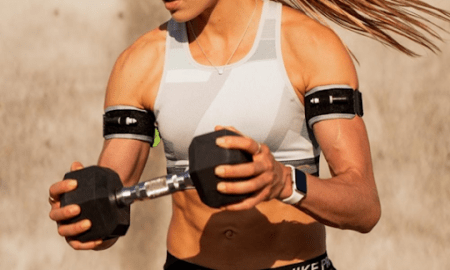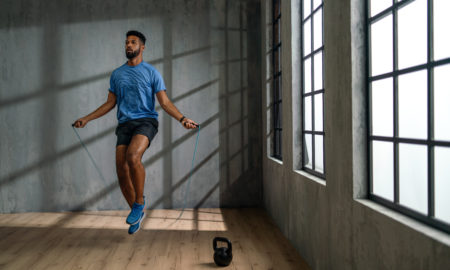 Q: What measures should I take in order to squat effectively?
Q: What measures should I take in order to squat effectively?
A: To make good progress on the squat, you must first know and practice correct squatting technique. Thereafter you need to squat intensively at a volume and frequency that are appropriate for you. For best results, you must also combine that good training with sufficient recuperation every day. Then you must keep all of that going for long enough to make a difference.
Always squat inside a four-post power rack with pins and saddles correctly and securely in place. Alternatively, use a half rack or sturdy and stable squat stands together with spotter racks or bars or a squat rack unit that combines stands and safety bars. Use a setup that should you fail on a squat, you can descend to the bottom position and safely set the bar down on the supports. There must be no compromise here—safety comes first. Ideally, you should have spotters standing by as well.
Only a small proportion of bodybuilders are naturally gifted for squatting because of their favorable body proportions and leverages. Most bodybuilders need to work at squatting technique and the essential supportive work in order to become competent squatters. Some, however, will never be able to squat well because they have lousy leverages for it—long legs and a short torso—or some back problem that precludes it. Be careful, though, not to look for an excuse to avoid the exercise. Provided you have at least average leverages for squatting, that you learn to squat with correct technique and that you train hard, this exercise can produce wonders—and not just for your quads but for your physique as a whole.
Good squatting ability has three major components:
1) The flexibility to be able to adopt the correct body position.
2) The back strength to be able to maintain the correct back position.
3) Correct exercise technique.
You need sufficient flexibility in your calves, hamstrings, adductors and glutes along with the required shoulder flexibility to hold the bar in position correctly. (Position the bar on the muscle that’s over your shoulder blades, not at the base of your neck.)
Follow a good flexibility routine two or three times a week and increase your flexibility gradually. If you have anything less than at least normal flexibility in any of the aforementioned muscles, but preferably an excellent level, your squatting technique will be compromised, with a reduction in safety and productivity. Squat correctly, or not at all.
You need sufficient strength throughout your back—lower, middle and upper—to be able to hold your lower back in the required slightly hollowed position while squatting. This is critical for safety. Your back must not round—there must be no back flexion.
Four key back exercises—partial deadlifts, back extensions, rows and shrugs—will help build the required strength provided that you work them with correct technique and progressive resistance.
Having the required flexibility and back strength is one thing, but learning to use them while squatting is something else. Correct squatting technique necessitates that you keep a slightly hollow lower spine even at the bottom of the exercise. Have an assistant watch you from the side to give you feedback on your lower-back position.
Don’t go any deeper than the depth at which you can maintain correct back positioning. You must lean forward in the barbell squat, but if it’s excessive you won’t be able to keep the correct lower back positioning. As you descend, you must sense the weight mostly over your heels, and then keep it there during the ascent. If at any time you feel the weight over the balls of your feet—or, even worse, over your toes—your technique would be a shambles.
At the bottom, drive your hips straight up. Provided the weight was primarily over your heels to begin with, driving your hips straight up should keep it there. Keep your shoulders pulled back and your chest stuck up and out as you descend and ascend.
Use a stance that’s about a hip width between your heels, with your toes flared about 30 degrees to each side. Then tinker with slight variations to find what gives you the best chance of maintaining the correct back position at a decent depth. Try a little less flare (and perhaps even a little more flare, depending on where you started), and try moving your stance a little closer and a little wider. Try all the permutations of those options.
The ideal is to squat to the depth at which the tops of your upper thighs are just below parallel to the floor, but that requires very good leverages for the squat. If you can’t get to at least the parallel position while maintaining the correct back position, it’s time to try the parallel-grip deadlift instead. You may be much better suited to that exercise than the barbell squat.
Depending on the individual, it may take several weeks if not a couple of months before correct squatting technique is achieved, even with just a bare bar. Don’t be frustrated. As your flexibility and back strength improve along with your ability to use them, so should your squatting ability. Once your technique is correct, use no more than a quarter of the weight you normally used to handle, and then build up the poundage gradually while maintaining perfect technique.
Until you’re squatting intensively, do leg presses in order to maintain your quad development.
—Stuart McRobert
www.Hardgainer.com
Editor’s note: Stuart McRobert’s first byline in IRON MAN appeared in 1981. He’s the author of the new 638-page opus on bodybuilding Build Muscle, Lose Fat, Look Great, available from Home Gym Warehouse (800) 447-0008 or www.Home-Gym.com.




















You must be logged in to post a comment Login